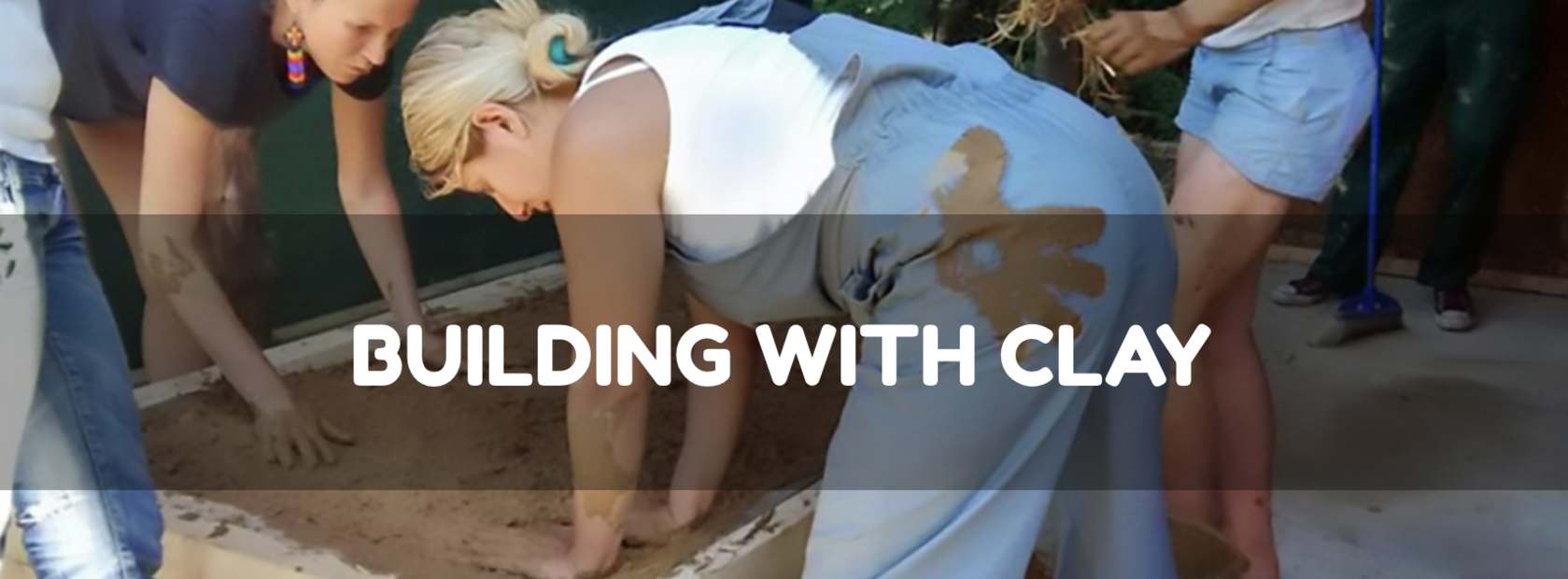BUILDING WITH CLAY

Introduction:
Building with clay, such as cob, adobe or braid with loam, is one of the most aesthetic, accessible and sustainable construction methods. These techniques are especially useful for smaller construction projects, where sufficient manpower is available. Anyone can participate in leather construction and it can be learned quickly by anyone. Technical knowledge is important though for building load-bearing structures, foundations and roof support. Teachers and facilitators of this activity should be trained and have some understanding of clay construction and building with other natural materials.
Roadmap:
- Divide the group into ‘water carriers’, ‘earth transporters’, ‘mixers’ and ‘formers’.
- Describe the task that each group must do. Choose whether to build a small free-standing wall, a natural sculpture, and/or a bench.
- Choose a spot and prepare the basic structure by stacking and securing hay bales, branches, boards and/or other materials. Involve students in the design and preparation of this structure.
- The mixers mix loam with water and fiber material (preferably with hands and feet…) a little further down the road. The carriers bring this mixture to the structure being built.
- To prevent cracks, formers apply the soil mixture to the structure in layers at intervals, allowing each layer to dry before applying the next. When the whole structure is completely dry after two to three days, a thin layer of sifted clay provided with different materials is applied to get various effects. Egg shells, paint, dyes, oils or lime can be used for this purpose. The final layer should be very fine and almost liquid to create a smooth surface.
Target:
Showing the potential for building with local materials and traditional methods, using intensive labor and smart design.
Learning outcomes:
Understand a carbon-neutral carbon footprint and apply this knowledge when designing and/or building using locally available building materials, such as clay, straw and wood.
Necessities:
Flipchart, locally mined clay, water and fiber materials (straw, pine needles, corn stalks, horse manure), planks, branches or hay bales, fasteners, tubs and buckets, tarp, mixing and plastering tools.
Evaluation:
Ask students what they observed. How they felt during this exercise. What did they discover about the technical, aesthetic and practical aspects of building with clay? What can they do with it in their environment? What can we use these techniques for globally? Where do they see no connections?


0 comments
Leave a comment
Please log in or register to post a comment